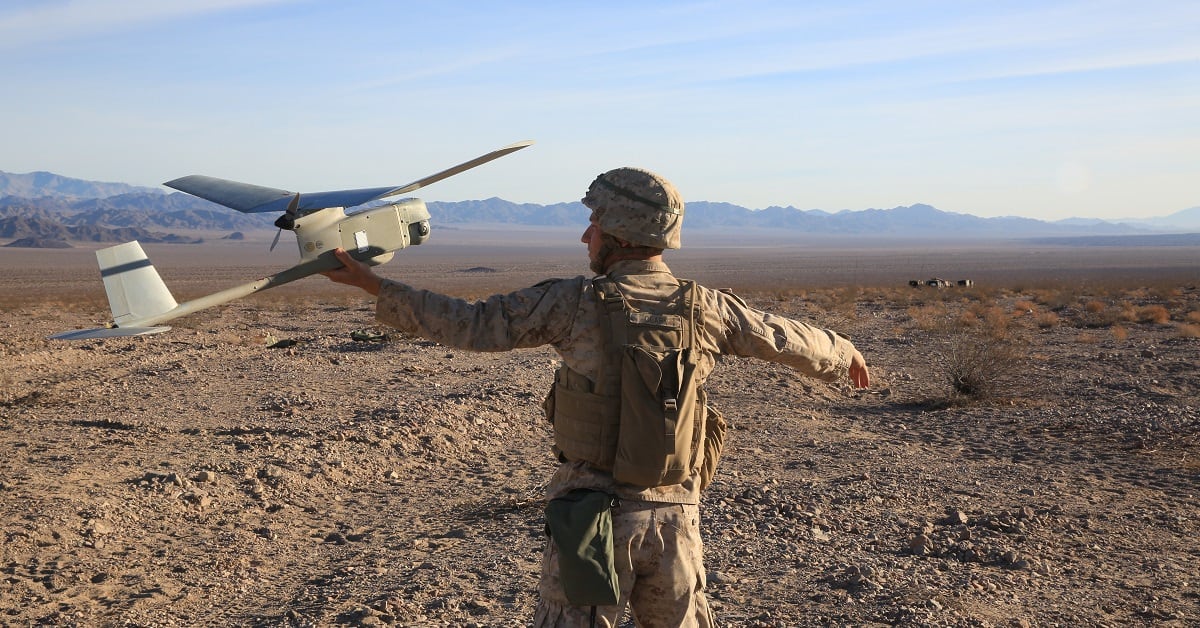As the Marine Corps enters its third year of the reconstituted Sea Dragon experiments, past, present and future efforts are all aimed at how the Marines can throw more weight into the naval warfighting punch.
Brig. Gen. Christian F. Wortman, commanding general of the Marine Corps Warfighting Laboratory, outlined the past year’s work focusing on logistics modernization and previewed next year’s focus: the information environment.
The infantry battalion was a previous focus, and experiments led to the adoption of new gear and the downsizing and reconfiguring of the rifle squad.
RELATED

What will the Corps' focus on the information environment bring?
Four major areas are on deck for Marines to contribute to the larger fight, Wortman said.
Those include the ability to deploy and use sensors from a distributed posture, employing fires based on sensor-fed information, support command and control in a contested environment and challenge the enemy’s ability to target or track U.S. forces.
One piece of hardware that will contribute to a key need ― sea control ― is an anti-ship, coastal defense missile.
Wortman declined to discuss either timelines or types of missiles that might fill that role, but he did say that the weapon would be “prominent” in upcoming exercises.
That weapon is a priority of top Marine leadership, he said.
Some of those same concerns are part of the past year’s logistics experimentation, which as included manned-unmanned robotics teaming with air, ground, surface and underwater devices.
The underwater options are of particular interest in logistics for consumable items, such as fuel.
Those same devices are helping Marines find novel ways to employ fires, Wortman said.
Earlier this year at a similar media event, Capt. Matt Cornachio, a fires project officer with MCWL, told reporters that Marines were aiming to have as many as 15 suicide drones in a swarm controlled by a single Marine. That’s part of the effort to bring “loitering munitions” work, which goes beyond traditional kinetic fires.
At the time, experiments had reached as many as six drones under one Marine’s control at a time.
Beyond standard munitions payloads, the experiments also worked with surveillance and reconnaissance, signals intelligence and command and control payloads, Wortman said.
“With those manned-unmanned teaming events, we’re recognizing a lot of options for really sophisticated combined arms integration,” Wortman said. “We’re really just starting to tap the full potential on these systems.”
Over the past eight months, the Corps has held four major training events to help build recommendations for modernization.
They conducted a fifth generation Advanced Naval Training Exercise at Camp Pendleton, California, a fires assessment in May, the manned-unmanned teaming evaluation in late October through early November and the Squad X, a project that both the Army and Marines participated in that was held by the Defense Advanced Research Projects Agency.
Next year, they’ll conduct three “Fight the Naval Force Forward” ANTX events to inform Sea Dragon efforts.
Alongside the technology evaluations, MCWL has also been involved in large-scale wargaming and is building a cadre of eight to 10 individuals as a permanent experimental opposition force. This group of civilians will come bring expertise for all domains and challenge amphibious and expeditionary capabilities, Wortman said.
Todd South has written about crime, courts, government and the military for multiple publications since 2004 and was named a 2014 Pulitzer finalist for a co-written project on witness intimidation. Todd is a Marine veteran of the Iraq War.




